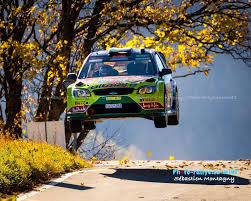
Supercars of extraordinary performance were some the finest cars of the 1960s. Among them are the Alfa Romeo Giulia, Ford Mustang, Oldsmobile Rocket 88, Aston Martin DB5 and Ford Mustang. What cars were the most dominant in this era? Learn more about these cars. Below we will be sharing some of our top picks. We'll take a look at some of our favorites from the 60s.
Alfa Romeo's Giulia
Alfa Romeo's first sports car was the original Giulia. The GTA was a lighter coupe-version of the car that Alfa Romeo introduced in 1965. Gran Turismo Alleggerita or "lightened" in Italian is the acronym for "GTA". Engineers at the company used several strategies to reduce their weight. They replaced heavy steel panels with lighter aluminum. Additionally, the Giulia Sprint GTA had plexiglass window installed. The overall weight loss was about 350 pounds.

Oldsmobile Rocket 88
The Oldsmobile Rocket 88 muscle car was a top-performing model that was introduced in 1949. For a sporty look, the large V8 was paired to a lightweight body. Although this car was dominant in road racing competition at the time, the Hudson Hornet soon surpassed it. Despite being the best muscle car in its era, Rocket 88 lost its identity over the years.
Ford Mustang
Ford Mustang is a legendary car. The Mustang comes in many body styles as well as different powertrains. The Mustang was designed to be a sporty, affordable two-door vehicle. It sold extremely well. The Mustang was a popular muscle car that inspired other automakers and helped them to create similar models. This car was a big success and inspired many others.
Aston Martin DB5
The Aston Martin DB5 is an iconic car which starred in James Bond’s 1964 film Goldfinger. This car descends from the DB4 Vantage. It was considered to be one of the most beautiful cars of its time. It was a four-door open-top coupe with an automatic or manual transmission. The engine was more powerful than the DB4 and boasted a power output of 282 horsepower. The DB5 could accelerate from naught to sixty in only 7.1 seconds, and claimed a top speed of 145mph.
Cadillac Coupe De Ville
The Cadillac Coupe de Ville was an iconic vehicle of the 1960s, making it one of the best cars of all time. It was the Cadillac's mainstream model, and it was redesigned for 1965 with a new tailfin design. The new tailfins are angled downwards and curved forwards but retain the same wheelbase as the overall styling. There was no change to the rear shelf package. However, the front wheel-drive version of the vehicle was available with an optional power liftgate.

Datsun 240Z
Datsun 240Z was a 3-door Japanese coupe that revolutionized the notion of fuel efficiency. The 240Z was first introduced in the 60s. It quickly became a popular hot hatch, replacing the large chassis and stout body lines of the other more common models. The 240Z was great, and it was affordable. This made it an attractive choice for everyday consumers.
FAQ
Does it matter what college I go to?
Non, really. There is no difference in the programs offered by colleges for getting into automotive work. There are some schools that offer more specific programs than others.
What are the different types of jobs available in car mechanic?
For car mechanics, there are three main areas for employment:
-
Automotive repair shops
-
Dealerships
-
Independent garages
Automotive repair shops
This is where most people consider becoming a mechanic. It's also the easiest way you can get started. You have two options: work in an existing shop or open your own.
If you plan to work in a shop, you must apply to join the union. After being accepted into the union, the union will provide training.
After the training, you will be ready to go and start your job.
You will need to register if your garage is going to be open. After you have registered, you will need to meet certain standards.
When you've registered, you'll be given a license to operate your garage.
Your license allows for minor repairs and spare parts sales. It will not allow you to repair major engine problems.
As well as selling spare parts you will need to offer advice and direction to customers.
Dealership jobs
Many dealerships have mechanics who are experts in one particular area. They might specialize in one area, such as brakes and tires.
Some dealers also have general mechanics that can handle all aspects.
These positions often require applicants that they undergo special training before being allowed work. This means employers can choose which candidates are best suited for their role.
Some dealerships even recruit graduates straight from university. These graduates are familiar with the fundamentals of mechanical engineering so they can easily learn about cars.
Independent garages
Independent garages do not belong to any dealership. Instead, independent garages tend to concentrate on providing high-quality services.
Independent garages don't have to be associated with any particular company. This allows them to offer higher wages. This makes them generally more well-paid than jobs at dealerships.
But this doesn't mean that independent garages are necessarily better places to work. Many owners prefer to control their businesses themselves, rather than delegating it to employees.
You might find yourself working long hours but having no control over what happens in the day.
Additionally, you should expect to earn lower wages if employed by a dealership.
It's possible to switch between jobs. To work at a dealership you will need to contact your employer to see if he is open to the idea of hiring you.
Alternatively, if you'd like to work at an independent garage, then you could try applying directly to the owner of the garage.
Unfortunately, finding a new job can be difficult. There are plenty of other factors that influence how much you earn.
You might also consider the vehicle type you repair, and whether extra labor is charged.
What qualifications does a truck mechanic need?
Although you don't need to have any formal qualifications, your experience working with trucks and engines is invaluable. Your experience is invaluable as you know how to diagnose problems quickly and efficiently.
Your knowledge of diesel technology will allow you to identify the parts that are required to fix our vehicles.
Statistics
- There were 749,900 jobs available for automotive service technicians and mechanics in 2016, which is expected to grow by six percent through 2026. (jobhero.com)
- 52% of Mechanics in the United States think their salaries are enough for the cost of living in their area. (indeed.com)
- According to the BLS, total auto technician employment is expected to exceed 705,000 by 2030. (uti.edu)
External Links
How To
How to properly diagnose your car for repair
You should first examine the symptoms your car is showing to determine if it requires repairs. You can then follow these steps for a proper diagnosis of your vehicle.
-
Check engine lights. Make sure to check all dashboard indicators like the engine light indicator (oil pressure gauge), the battery indicator (battery light indicator), and the RPM indicator (rpm gauge). It could indicate that your vehicle is having problems.
-
Take a look at the treads. Tires can become worn and cause problems in handling and braking. Also, inspect the treads of your wheels. They should be smooth and clean. It is best to take off the wheels and remove them. To check the condition of your treads, use a flashlight.
-
Observe the brake fluid level. You should always keep track of the amount of brake fluid in your vehicle. This will ensure that your brakes run smoothly. Low brake fluid levels could cause your brakes to fail when you apply pressure.
-
You should test the suspension system. Vehicles usually have a suspension system that helps absorb shocks and vibrations while driving. It allows for better control, smooth acceleration, and deceleration. A suspension problem can cause your vehicle to feel wobbly and shake uncontrollably. To determine whether your vehicle may have a suspension issue, you can try to put weight on the rear or front axle and watch the movement.
-
Take a look at the steering column. Steering columns are used to connect the steering wheel to the rest of the vehicle's components. Sometimes, steering columns are damaged by accidents. You should replace the steering column if it is loose or weak.
-
Pay attention to the exhaust pipe. The exhaust pipes are responsible for moving gases from the combustion chamber into the atmosphere. Your cabin will be effected if your exhaust pipe cracks or leaks. If your tailpipe bends, it is important to fix it immediately.
-
Take a look at the underside of your hood. To check for unusualities, look under the hood. Leakage of fluids in your engine could indicate that it is leaking. Also, professional technicians should be called if you detect an unusual smell coming out of your engine compartment.
-
You should inspect your air filter. The air filter in your vehicle collects dirt and dust from the environment. Vehicles that have a dirty air filter will not run well. Replace your air filter regularly.
-
Check the fan belt. Your vehicle's fanbel is what connects the engine and the transmission. If it breaks, the engine won't turn over. It is very easy to replace your belt. You only need a screwdriver or pliers to replace your belt.
-
Make sure you inspect the radiator hoses and hoses. The radiator hose carries water from the radiator to the engine. It can crack or become damaged and leak hot liquid onto an engine. The hose can be repaired with a pair or needle-nosepliers, and a wire brush.
-
Be sure to inspect your windshield wipers. Windshield wipers work by using electricity to remove rain and snow. If they stop working, they could leave streaks on your window glass. Simply change the washer oil to fix the problem.
-
Make sure you check the cables. The battery cables supply power to your car's electrical systems. When you replace batteries, make sure to disconnect the negative cable first. Failure to do so can damage your alternator.
-
You should check the headlights. The headlights will illuminate the road ahead. Bad visibility can be caused by headlights that don't work correctly. To check if the bulbs have gone out, you can inspect them.
-
Always check your lights. You can warn other drivers if you approach them at night. You may be distracted by the light and end up in an accident.
-
You should inspect your brakes. Brakes will reduce the speed of your car in case of an accident. If your brakes aren't working properly, you may lose control and crash into other cars.
-
Change the oil. Oil keeps your engine lubricated. It helps keep metal parts from getting too worn down. It is recommended that the oil be changed every other month.